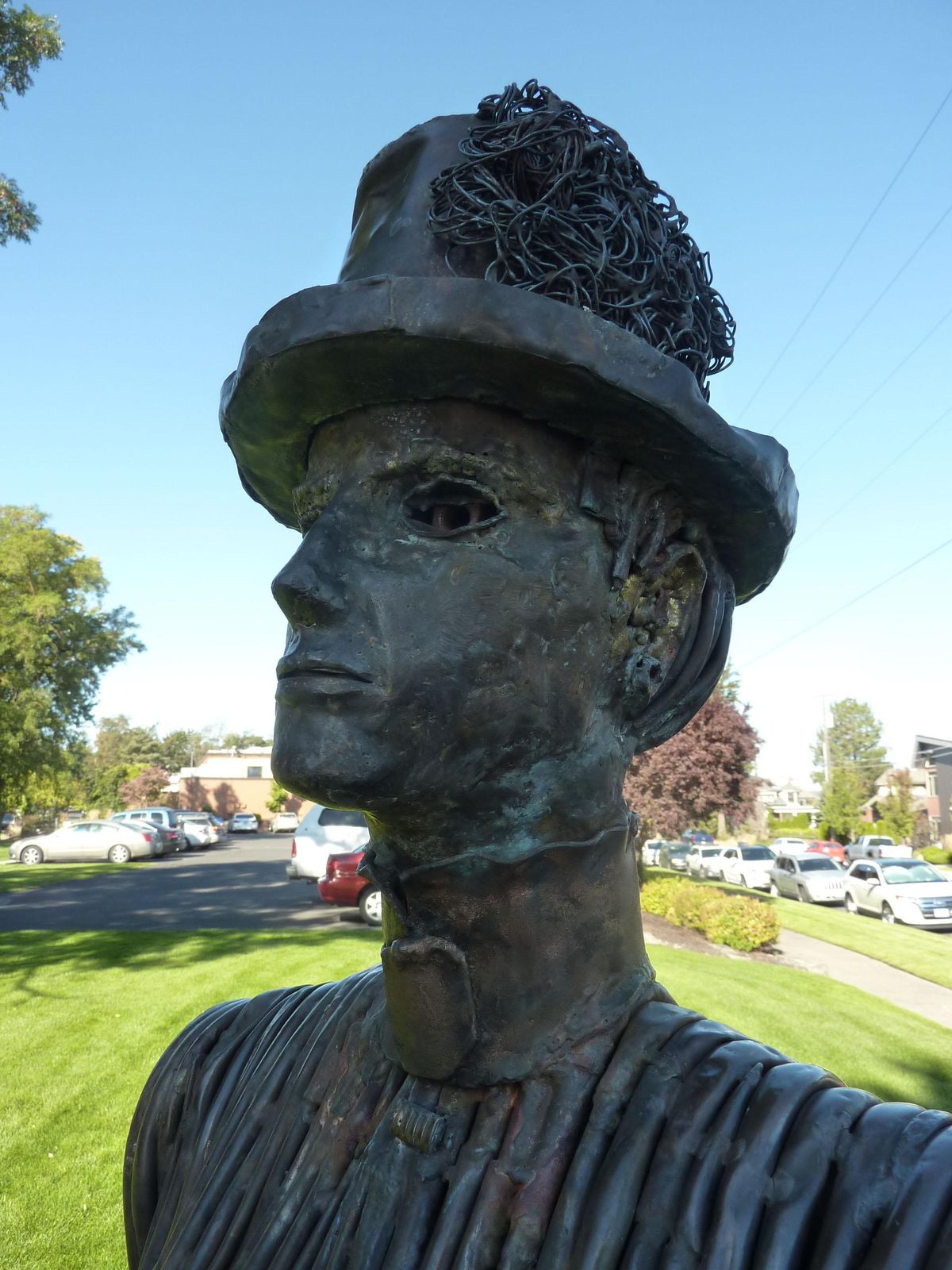Landmarks: Statue reflects Spokane’s early optimism

For an inanimate object, the serene statue of Anna Stratton Browne has had a rather dramatic history in the few years it has stood at the entryway to Spokane’s historic Browne’s Addition just west of the downtown area.
The “Mrs. J.J. Browne and Daughter” metal statue was once decapitated and on another occasion nearly kidnapped since it was placed on a small median area at the intersection of Riverside Avenue and Maple Street in 2005. But most of the time, it has stood in place as a tribute to one of the founding mothers of Spokane and serves as a small gathering point for Browne’s Addition neighbors as they sit and visit on the benches facing the statue.
Karen Mobley, city arts director from 1997 to 2012, was project director for the Art in Public Places project, which led to creation of the statue. It was funded by setting aside 0.5 percent of the cost of construction of Spokane Fire Department Station No. 4, which is located just across the street from the statue.
“The neighborhood association and the Fire Department wanted something that was reflective of the time of the neighborhood’s construction in the late 19th century, something showing prosperity and a sense of optimism,” Mobley said. “Mrs. Browne was important in the neighborhood in that time and was one of the women, along with May Hutton and others, who were involved in civic leadership, for which they did not get enough credit. It was a time of Spokane’s great fire, a time when family issues needed attention – and they paid attention.”
Sister Paula Turnbull, Spokane’s noted metal sculpture artist, created the statue, which is made of copper, plumber’s pipe, bronze, brass and steel, with all parts welded together. She is also noted for creating the Garbage Eating Goat in Riverfront Park as well as many other works around the region.
Mobley said the artist’s inspiration was Georges Seurat’s “A Sunday Afternoon on the Island of La Grande Jatte,” the famous 1884 pointillism painting showing well-dressed Parisians at leisure along the Seine River. She crafted Mrs. Browne and her daughter Alta in the style of the woman prominent in the painting, giving it the same contour and shaping.
In earlier interviews, Turnbull said she did it because she liked that painting and because it was similar to how Mrs. Browne dressed, and it was from the right time period. “The statue is magnificent and eccentric,” Mobley said.
Anna Stratton Browne came to Spokane with her husband, J.J. Browne, and their infant son in 1878, traveling from Portland by boat and over land. In the diary, which she kept for many years, she wrote of her difficult journey, which included travel by lumber wagon to Colfax: “All agreed I was very foolish to think of going with my baby to such a wild place as Spokane and told me we should have planned to stay in Colfax, which was the only town of any promise in the Spokane country.” But later she wrote: “When I saw all the pine trees … I loved Spokane from then on.”
Her husband prospered as attorney, businessman, real estate developer and investor in the new territory that turned out to be ripe with promise after all. In 1892 he was named in the New York Tribune’s list of millionaires. Among his many other successes, he purchased the land which he developed as Browne’s Addition and donated a site there for a park, Coeur d’Alene Park. During those days, Anna Browne created a home for the family in Browne’s Addition, bore several more children and worked in the background with the Ladies Benevolent Society’s efforts to provide for orphans.
She also raised funds for various other causes and, because her husband’s business often took him away from Spokane, she collected rents and paid the bills, according to Barbara F. Cochran’s account in her book “Seven Frontier Women and the Founding of Spokane Falls.” When her husband died in 1912, she took over management of his businesses.
Written accounts indicate the Brownes had a loving marriage and that she had a good life. Her statue, however, has had a bit of a rougher time of it – though it is much appreciated in the neighborhood, Mobley said.
In August 2014, someone removed the head of Anna Browne’s statue. Mobley became involved in an effort to ransom the head, but as it turned out, a woman living in Browne’s Addition contacted her, saying a family member was holding on to it for safe keeping. Mobley went to retrieve it, no questions asked, and it was reattached.
“People looking at the statue now sometimes notice that Mrs. Browne’s neck appears too long,” Mobley said. “True. To repair it after the beheading, reinforced pipe had to be added, which does extend the length of the neck.”
Another time, some people tried to kidnap the entire statue, which weighs in excess of 1,000 pounds. Mobley said they put a towing chain around it and pulled it off its footing, apparently with the idea of lifting it into a vehicle and driving off. But because of the weight, they couldn’t move it.
And there’s another reason the would-be kidnappers weren’t successful. “Not surprisingly, the Fire Department across the street came to the rescue,” Mobley said. “They saw what was going on and came over and caught the guys, who were promptly arrested.”